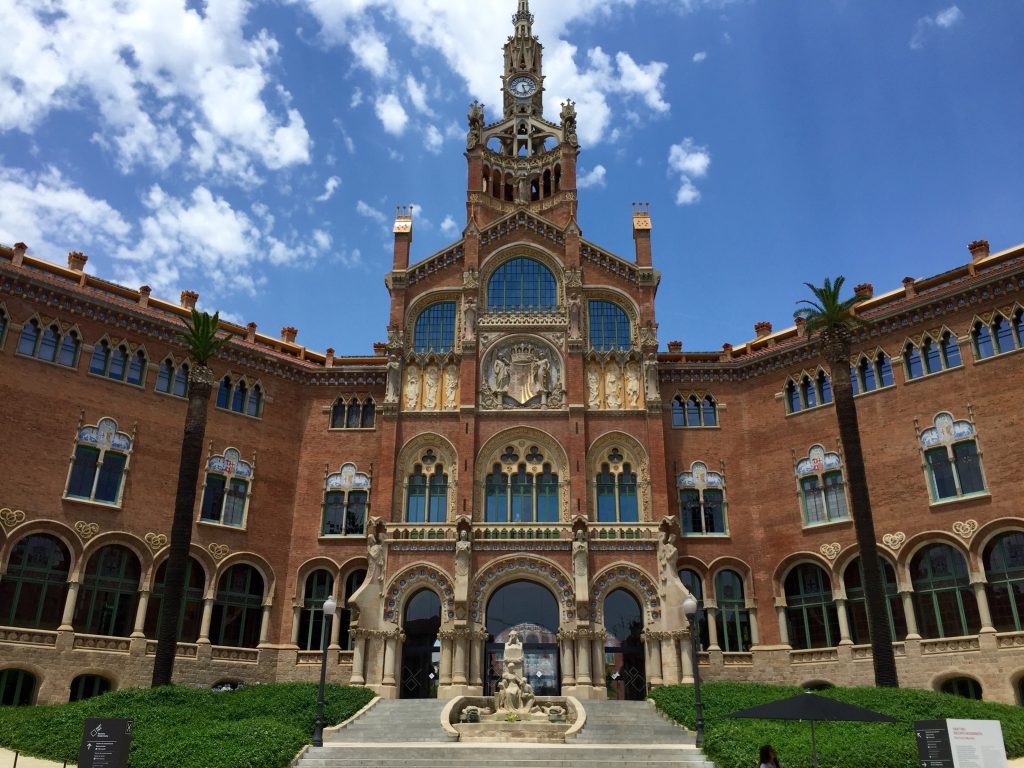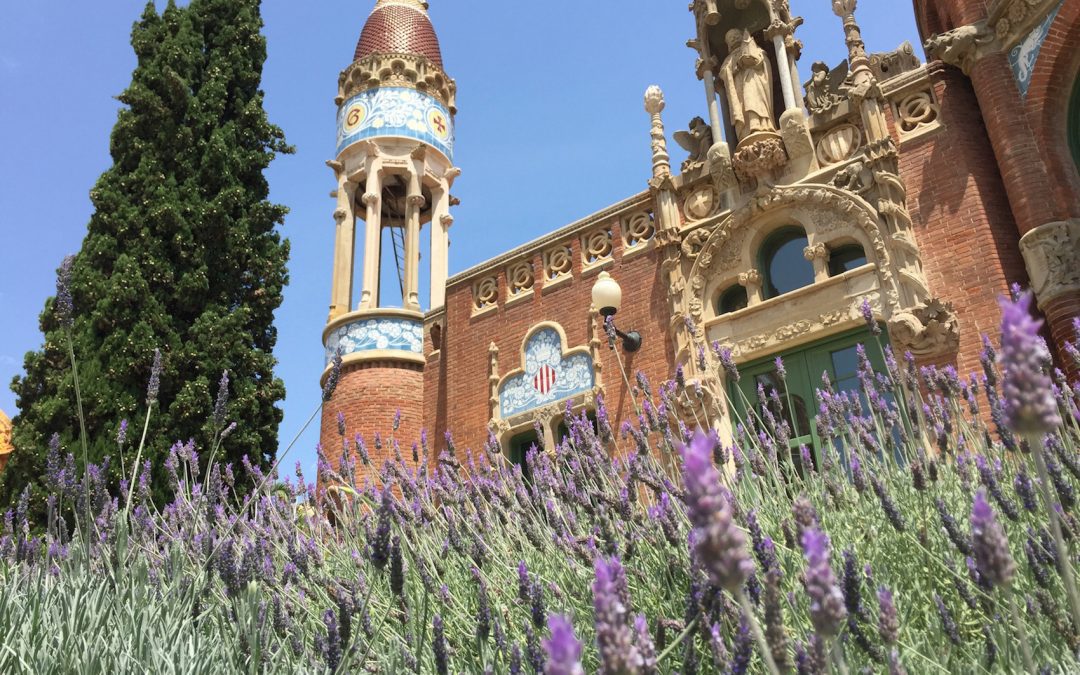Last Updated on January 19, 2024 by Christian Heide
An architectural highlight of the Catalan Modernism architectural style awaits you at the Hospital de la Santa Creu i Sant Pau. There is an all-clear for those who suffer from a hospital phobia. This huge Art Nouveau clinic site, built in the first third of the 20th century, is now a place for research and encounters. It has been registered as a UNESCO World Heritage Site since 1997. Hospital operations were moved to a new building in 2009. Facades and essential parts of the historic complex are freely accessible – and there is a great view over Barcelona. Even the Sagrada family is at your feet.
The architect Dominèch i Montaner is already an old acquaintance. December 27, 2023 marked the hundredth anniversary of his death. Among his other magnificent monuments that you can discover on tours with The Barcelona Feeling you will find the Palau de la Música, Barcelona´s grand concert hall or a beautiful residential building such as Casa Lléo I Morera.


Architecture with tradition and technological innovation
What catches the eye: red brick for the facades, decorated with light sandstone that is the material for countless statues at the same time. Then of course the ceramics for roofs and wall decorations, such as the classic Catalan Trencadís mosaic. Last but not least, glass and cast iron as modern building materials that bring transparency and lightness: the architect uses all of them masterfully to create a total work of art.
At the same time, the facility set technical standards at the time. Central heating and its own power plant demonstrated that Barcelona wanted to compete with the leading European cities. A special highlight: the sick were transported through underground passageways between treatment houses and pavilions for the sick. Two isolation wards with their own pavilion were available to the right and left of the main building for people with contagious diseases. The building for the operations is also impressive. The operating room, located in an apse on the north side of the building, received daylight through frosted glass windows.
Mosaics and sculptures: picture puzzles for the whole family
From the Sant Pau-Dos de Maig metro station, just walk one block around the corner and you’ll find yourself in front of the impressive main building. A neo-Gothic tower forms its center. There is modernist architectural decoration on the side wings. Fans of Catalan history will find numerous hints in forms of mosaics and sculptures inside the main building. In any case, the large staircase of honour and the 17 meter high event hall are breathtaking.
The main building forms the southern tip of a square standing on a corner. This creates a strict north-south orientation. If you walk through the entrance hall into the central site, you are greeted by an inner-city garden with a clear structure. An ascending main path divides it into an eastern and western part as a mirror axis. On the right, eastern side there are the pavilions in which male patients were treated. These houses bear the names of male patron saints. On the left are the pavilions for the patients, who were supposed to be protected by the Blessed Virgin and other female saints. Above all, light and air were used to support the recovery process, so that all pavilions have south-facing windows. 48 pavilions were planned. Domènech i Montaner completed 13 of these between 1902 and 1913. His son continued the work, but the modernist architectural style disappears when walking further into the hospital ground. In the end, the hospital was completed by the Spanish king in 1930.

Barcelona’s emergence into modernity
The strong connection between nursing and the Christian religion also has a long tradition in Barcelona. The Hospital of the Holy Cross and Saint Paul, as it would be called in English, dates back to 1401, when six Catalan hospitals were merged after a devastating wave of plague. In the prosperous city of the 19th century, the traditional location in the medieval city center of Barcelona became too small. A municipal clinic was not opened until 1906.
And that is why the Hospital de la Santa Creu i Sant Pau was founded as a church institution. The generous foundation of the entrepreneur Paul Gil was crucial. He wanted to ensure his hometown Barcelona’s connection to modernity and combined this with clear ideas regarding the Christian and Catalan image program. Lluis Domènech i Montaner was the architect to make this idea a reality. It continues to impress to this day, even though the original plans were never fully implemented due to the long construction period.
What to do in Barcelona after a visit of Hospital Sant Pau
When you have finished your walk across the enchanting grounds of the Hospital de la Santa Creu i Sant Pau, you could easily continue with a visit of Sagrada Familia. Gaudí´s masterpiece is just a 10 minute walk away from the breathtaking hospital.
If you love the hospital´s architecture you should probably attend a concert in the magnificent concert hall of Barcelona: Palau de la Música. The “music palace” is a major highlight in Barcelona and daily concerts are scheduled (classic music, Flamenco and Spanish guitar, opera). It is the other masterpiece of Domènech I Montaner.
The Barcelona Feeling offers a two-hour walking tour about the architecture of Catalan Modernism. “Gaudí and Barcelona Legends” is a great introduction and covers not only Gaudí buildings but also works from other top architects of his time such as Puig I Cadafalch or Domènech I Montaner.

